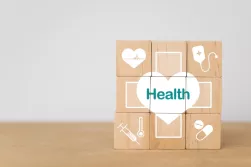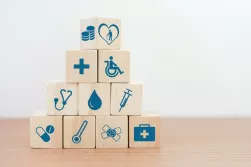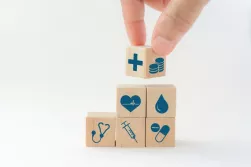One of the greatest and ongoing conveniences that offers constant progress certainly lies in technological advances. We see this in every aspect of our daily lives. For evidence of the massive societal shift that technology offers look no further than your cell phone, tablet, or computer. It’s a safe bet that once you think you have it down, the next shiny toy hits the market.
Healthcare, particularly Pharmacy, is not immune to these phenomena. The rapid advancement in all areas of Pharmacy practice aided with well positioned technology has presented an array of opportunities to assist a well-oiled Pharmacy program to elevate to the next level. With that comes the responsibility to utilize the appropriate technology based on the individual needs of the practice environment and to go all in. Think of that treadmill you had to have on January 2nd, to embark on your New Year’s resolution. You either have your ticket to your beach body or a $2000 hanger. It’s all up to you how you employ your shiny new toy.
Let’s look at a few topline thoughts on technology and the how/why you would want it, how you would use it and what may be worth it or not based on your strategic focus.
The first thing to evaluate is your clinical programming and the human involvement you want to incorporate. For this you must evaluate several key points, such as how you want your technicians and pharmacists to matriculate outside the pharmacy. For example, if you want pharmacists rounding more, perhaps have them decentralized permanently, or have technicians circulating on the floors and in the ED say for medication reconciliation, then you need to have the technology to perform automated duties in the pharmacy.
Next you need to look at the cost element. Just because it looks great and has a significant price tag doesn’t mean you need it. Look at the contracts you have to see where you can make deals or lean into a barter type relationship. Maybe if you offer to be a Beta site for new technology, you can get a much better deal if you are willing to share outcomes. Maybe you haven’t made the most of economies of scale and you have some opportunities there.
The next big question is your regulatory readiness and how well you have performed in recent surveys. If you find you are running a fire drill every time you have to produce data on survey, then the technology you need is more along the lines of automated reporting and/or catching issues in real time. For example, if you have automated medication dispensing cabinetry and need to produce diversion information, the reports that are baked into this technology are invaluable.
In terms of technology groupings, let’s break them down into bite size pieces.
Automated Dispensing Machines. Most likely you already have this or want it. The question is do you use all or most of what this system has to offer? Do you have overlapping technology that you don’t need because you have not tapped into the full cadre of offerings your chosen system is capable of? The companies that sell this technology also offer support that is baked into the contract. Talk to them about what they suggest and schedule training and overviews a couple times a year to assure you are up to date on the software, are using the administrative options to their fullest capacity and evaluating anything new that may have been rolled out on their platform. This may seem like a no-brainer although you may be surprised at what you have been missing out on. Maximize everything in your chosen system to create diversion protocols, reduce possible adverse events and to stay ahead of the last outdated pill lurking around just begging to be found on your next survey.
Remote Verification. Let’s say you want to, need to or have no choice but to keep the FTE component down. Depending on your state laws, you likely have the ability to incorporate your ADM’s with remote verification for overnight coverage for example, thus not relegating this to the emergency cabinet that has to be reconciled the next day as well as offering real-time verification of the order to satisfy regulatory oversight. Pharmacy should not be practiced only during daylight hours.
RFID. There are so many options here and the technology is great, but not widespread and/or financially attainable which means grouping RFID into buckets. It can be used for specialty medications using technology that is like a hotel mini fridge essentially making these consignment medications. You only pay when you use them and get reminders when these wildly expensive therapies are about to go out of date. Another great grouping is code cart replenishment and documentation, two big issues for every hospital since the beginning of time. RFID technology can make refilling and checking the trays much more streamlined, allowing for the redirection of pharmacists’ time incorporating the reporting from the RFID and tech on tech checking depending on state laws.
Computerized Physicians Order Entry. Everybody must have it. Many are annoyed by it. Here’s the thing, gradually increasing the use allows for order sets to be used more effectively as well as testing the limits of policy acceptance. Let’s say that your hospital has approved TPN to be written by Clinical Nutrition, and the orders are based on pre-mixed PPN and TPN. In this scenario, physicians’ time is eased up, treatment is expedited, the expertise of Clinical Nutrition is appropriately employed, and the relevance of the program can be evaluated by the reporting that can be obtained. This is an excellent story to tell when the JC shows up in your lobby.
We have mentioned just a scant few of the possibilities available to create an optimized technology infused clinical environment. The choices available and reasoning for use could go on for many articles with one overarching theme which is when thinking about what you have, what you want and what makes sense take the whole picture into account as well as your ability to make the most of your options. To achieve this, ask yourself a few key questions. Am I using what I have to full capacity? What gaps do I need to fill in? Where are our vulnerabilities and what do we struggle with? If you work backwards from there you can engage in a more mindful fashion all around turning your attention to the technology that works for your patients and your practice.



